5 Creative Ways to Make Holes in Plastic Pots Without a Drill

If you love gardening, chances are you’ve encountered the problem of needing drainage holes in plastic pots. While most gardening enthusiasts turn to drills for this task, not everyone has access to one or feels comfortable using power tools. Thankfully, there are creative ways to make holes in plastic pots without a drill.
1. Hot Nail Method: One of the easiest and most accessible ways to make holes in plastic pots is by using a hot nail. Simply heat a metal nail or screwdriver over an open flame until it becomes hot. Then, press the hot nail into the plastic pot, allowing it to melt through and create a hole. Remember to use caution and protect your hands from the heat.
2. Hammer and Nail: If you have a hammer and nail on hand, you can use them to create holes in plastic pots. Place the pot on a sturdy surface, then hold the nail against the spot where you want the hole. Gently tap the nail with the hammer until it penetrates the plastic and creates a hole. This method requires a bit more strength and precision, so take your time and be careful.
3. Glue Gun Method: If you have a glue gun at home, it can be a creative tool for making holes in plastic pots. Start by heating up the glue gun and selecting a thin nozzle or attachment. Once the glue gun is hot, simply press the nozzle against the plastic pot and create a hole by slowly pushing through. This method offers more control and precision compared to other options.
4. Molten Rod Method: For those comfortable working with heat, the molten rod method can be a unique way to make holes in plastic pots. Heat up a metal rod or skewer, ensuring it becomes red hot. Then, carefully press the hot rod against the plastic pot, allowing it to melt through and create a hole. Always handle the hot rod with caution to avoid burns.
5. Soldering Iron: If you have a soldering iron handy, it can be an effective tool for making holes in plastic pots. Start by heating up the iron and selecting a thin tip. Then, carefully press the hot tip against the plastic pot, allowing it to melt through and create a hole. Remember to work in a well-ventilated area and take necessary precautions while handling the hot iron.
With these creative methods, you can easily make drainage holes in plastic pots without needing a drill. Whether you prefer using a hot nail, hammer and nail, glue gun, molten rod, or soldering iron, you can find a method that suits your comfort level and materials available. Happy gardening!
Use a heated nail
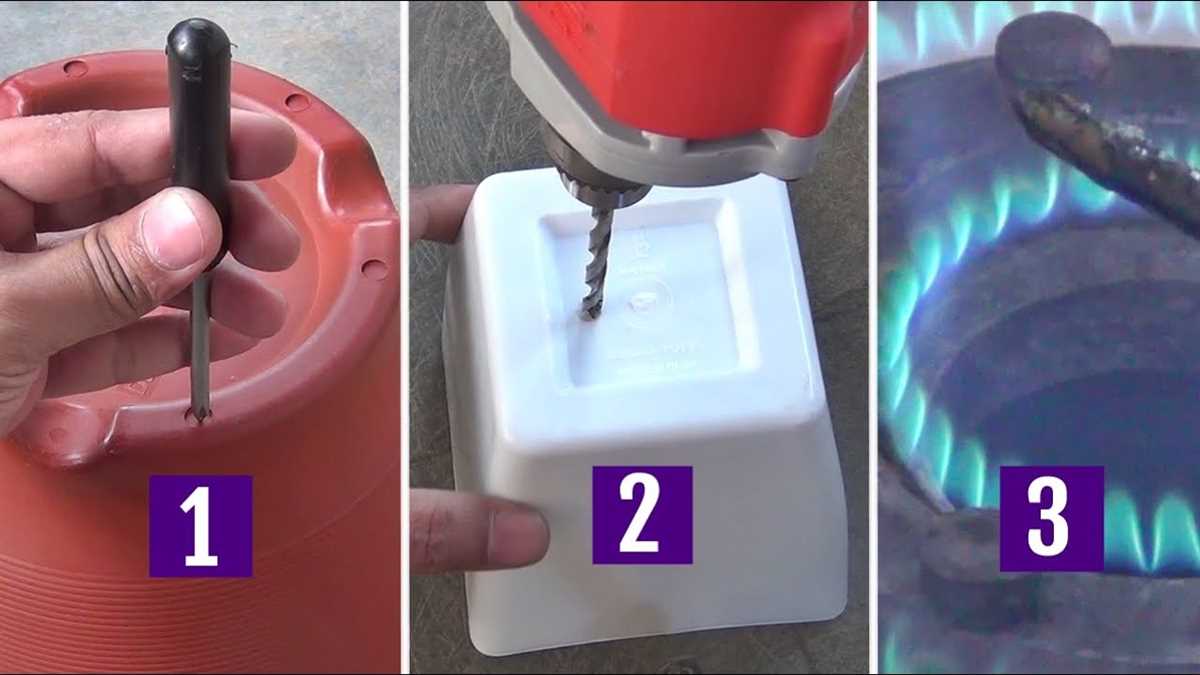
Another creative way to make holes in plastic pots without a drill is by using a heated nail. This method involves heating up a nail and then using it to melt through the plastic.
Materials needed
- Plastic pot
- Nail
- Lighter or torch
- Protective gloves
Step-by-step instructions
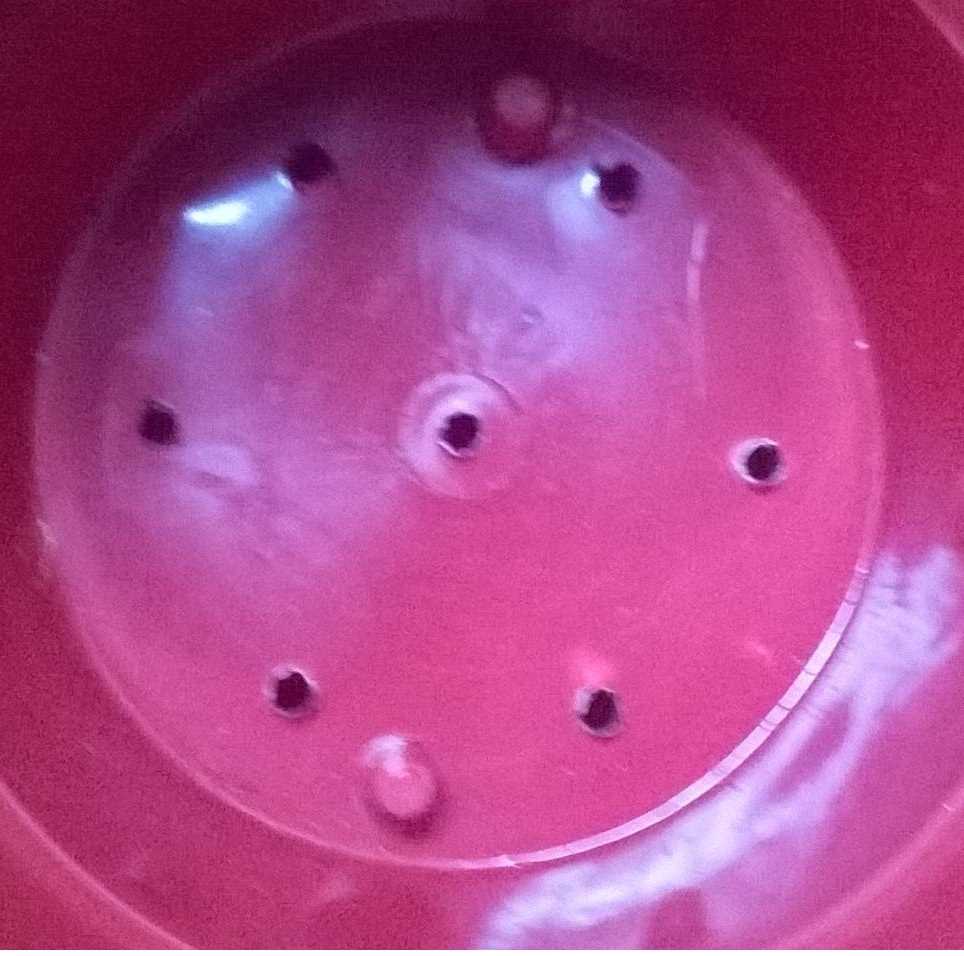
- Put on protective gloves to avoid burning yourself.
- Hold the nail with the pliers or tongs.
- Heat the tip of the nail using a flame from a lighter or torch. Make sure the nail gets hot enough to melt through the plastic but be cautious not to overheat it.
- Once the nail is hot enough, press it firmly against the plastic pot where you want the hole to be.
- Apply gentle pressure and slowly rotate the nail in a circular motion. The heat from the nail will melt through the plastic, creating a hole.
- Allow the plastic to cool before touching it.
- Repeat the process if you need to make more holes in the plastic pot.
Note: This method may create rough edges around the hole. You can smooth them out by using sandpaper or a file.
Using a heated nail is a simple and effective way to create holes in plastic pots without the need for a drill. However, it does require caution as you are working with heat and molten plastic. Make sure to take necessary safety precautions and work in a well-ventilated area.
Try a soldering iron
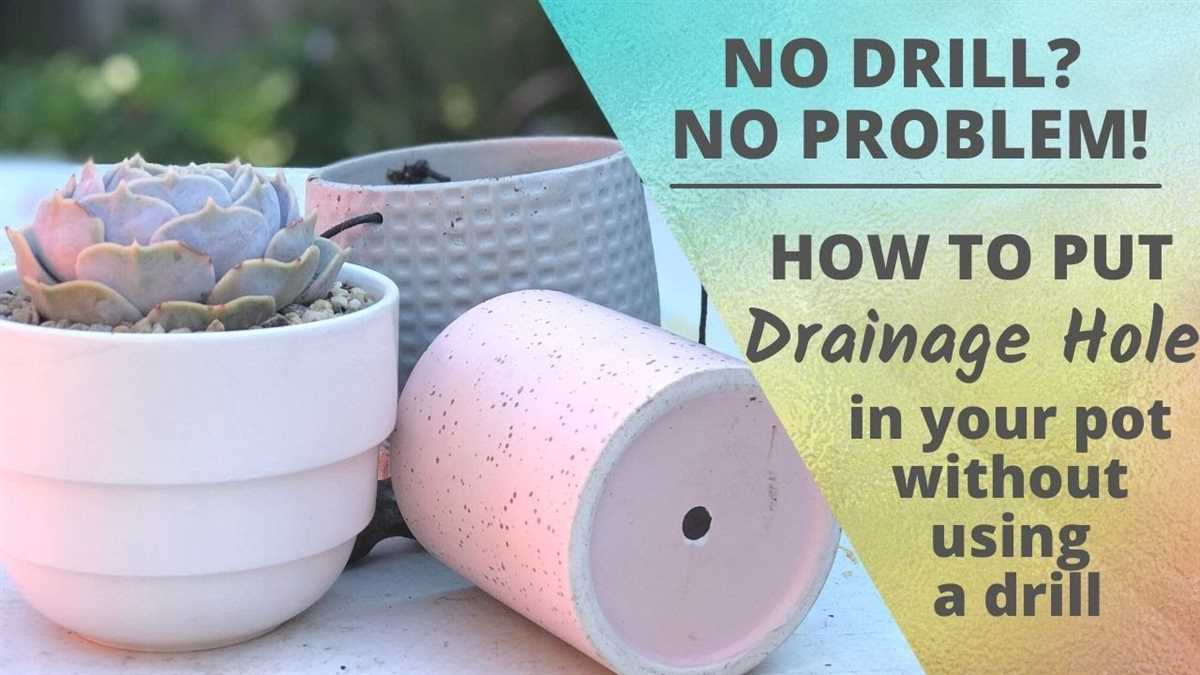
If you have a soldering iron on hand, it can be a great tool for making holes in plastic pots. Here’s how you can use a soldering iron to create the perfect hole:
- Choose the desired location on the plastic pot where you want to make a hole.
- Ensure you have proper ventilation in the area, as soldering produces fumes that can be harmful.
- Plug in the soldering iron and give it a few minutes to heat up.
- Place the soldering iron tip directly on the chosen spot on the plastic pot.
- Apply gentle pressure and slowly rotate the soldering iron in a circular motion to create the hole.
- Continue applying pressure until the soldering iron completely melts through the plastic.
- Remove the soldering iron and allow the plastic to cool before handling it.
Note: Always use caution when working with a hot soldering iron and ensure that you have a stable surface to work on. It’s also a good idea to wear protective eyewear and gloves to avoid injury.
Heat up a metal skewer
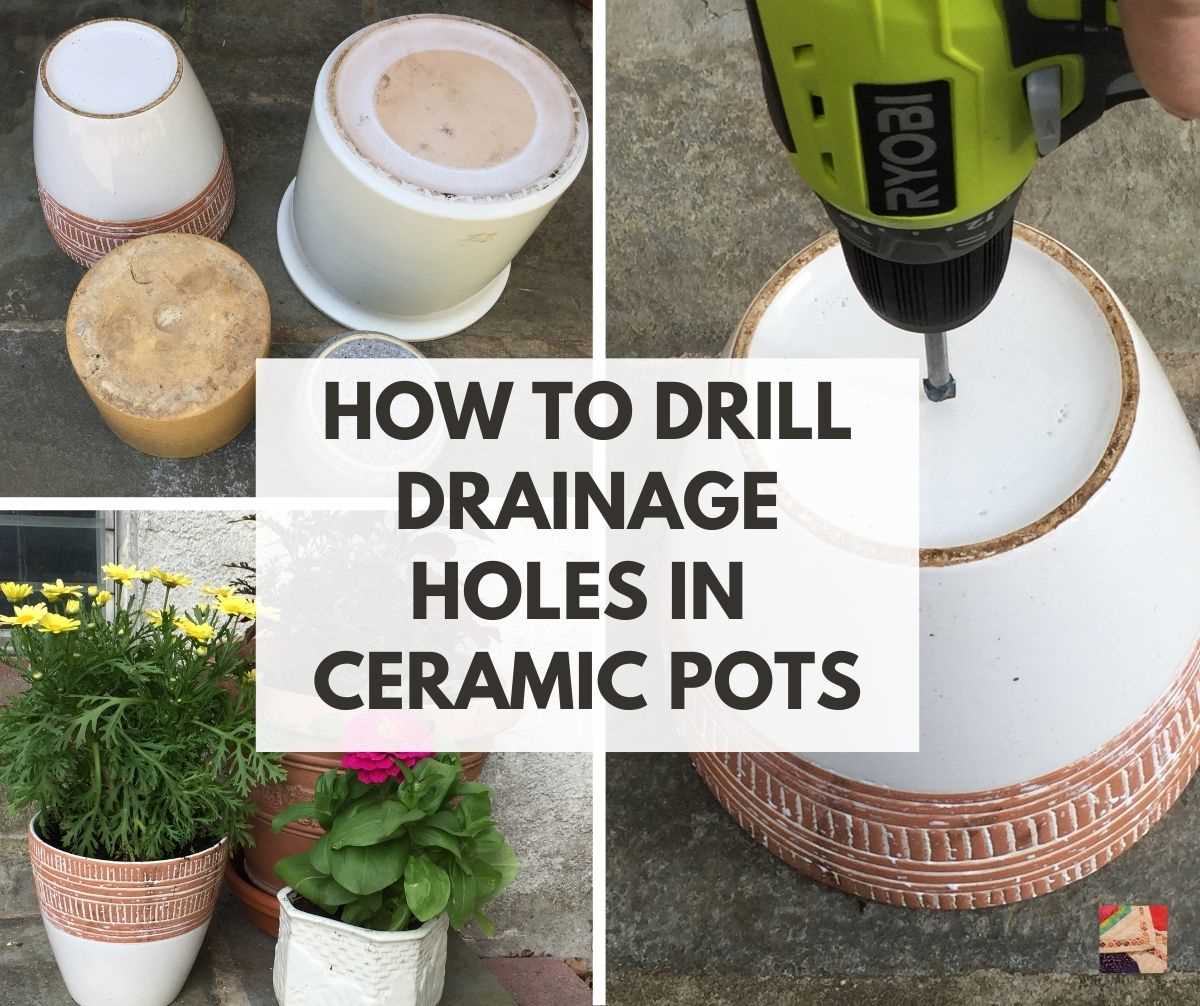
Another method to create holes in plastic pots without a drill is by using heat to melt the plastic. One way to do this is by heating up a metal skewer.
Materials needed:
- Plastic pot
- Metal skewer
- Heat source (stovetop or flame)
- Heat-resistant gloves
Steps:
- Choose a metal skewer that is thin enough to create a small hole in the plastic pot.
- Put on heat-resistant gloves to protect your hands from the hot metal.
- Turn on the heat source (stovetop or flame) to low or medium heat.
- Hold the metal skewer over the heat source, making sure to rotate it to evenly heat the tip.
- After a few minutes, the metal skewer should be hot enough to melt through the plastic pot.
- Carefully press the hot metal skewer against the desired area of the plastic pot, exerting gentle pressure to create a hole.
- Remove the metal skewer and let the plastic cool before handling.
Note: Be cautious when working with heat and always take necessary safety precautions to avoid burning yourself or causing damage to surrounding objects.
Try a hot knife
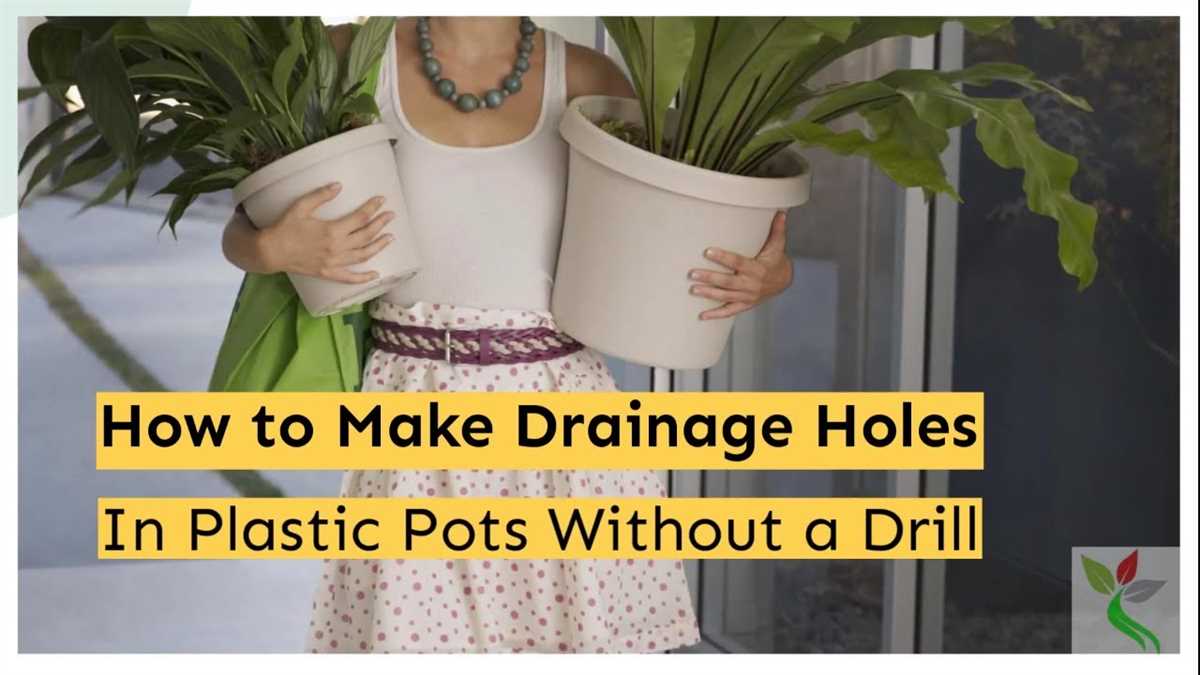
If you don’t have a drill or a soldering iron, another method you can try is using a hot knife. This method is especially useful for cutting small or precise holes in plastic pots.
To use a hot knife, you will need:
- A small knife with a sharp blade
- A heat source (such as a gas stove or a candle)
- A pair of pliers or tongs to hold the knife
Here’s how you can make holes in plastic pots using a hot knife:
- Start by heating up the knife blade using the heat source. Be careful not to touch the hot blade with your bare hands.
- Once the blade is hot, hold the plastic pot firmly in one hand and carefully press the hot knife blade against the area where you want the hole to be. Apply gentle, even pressure and let the heat melt through the plastic.
- Slowly move the knife in a circular motion to enlarge the hole. Take your time to ensure a clean and precise cut.
- Continue this process until you have created the desired number of holes in the plastic pot.
- Once you have finished, allow the plastic to cool before handling the pot or adding any plants or soil.
Remember to always exercise caution when using a hot knife. Make sure to work in a well-ventilated area and keep flammable materials away from the heat source. Additionally, be cautious of any hot plastic that may drip or splatter during the cutting process.
Use a heated screwdriver
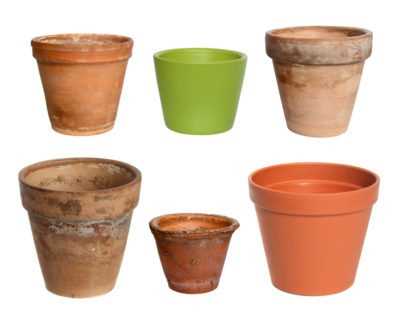
If you don’t have a drill and still need to make holes in your plastic pots, you can use a heated screwdriver as an alternative method. Here’s how:
- Choose the right screwdriver: Select a small, flat-head screwdriver that fits comfortably in your hand.
- Heat the screwdriver: Hold the metal shaft of the screwdriver over an open flame, such as a gas stove or a lighter, for a few minutes until it gets hot.
- Make the holes: Position the heated tip of the screwdriver against the spot where you want to create a hole in the plastic pot. Apply pressure and twist the screwdriver back and forth to melt through the plastic. Be careful not to touch the hot tip with your hands or anything flammable.
- Cool down: After making the hole, give the screwdriver a chance to cool down before moving on to the next hole. You may need to reheat the screwdriver periodically if it cools down too much.
This method may take more time and effort compared to using a drill, but it can be effective for creating small to medium-sized holes in plastic pots. It’s important to exercise caution and work in a well-ventilated area to avoid inhaling fumes from the melting plastic.
FAQ:
What can I do if I don’t have a drill to make holes in plastic pots?
If you don’t have a drill, there are several creative ways you can make holes in plastic pots. One option is to use a heated metal object to melt the plastic. You can also use a hammer and a nail to manually create holes, or use a soldering iron to melt holes in the plastic. Another option is to use a heated electric screwdriver or a heated metal wire to make holes in the plastic pots.
Is it necessary to make holes in plastic pots?
Yes, it is important to make holes in plastic pots to allow for proper drainage. Without holes, water can accumulate at the bottom of the pot, leading to root rot and other moisture-related problems. By making holes in the plastic pots, you can ensure that excess water can drain out and prevent waterlogging of the plants.
What is the best tool to use if I don’t have a drill?
If you don’t have a drill, there are several tools you can use to make holes in plastic pots. One option is to use a heated metal object like a knife or a screwdriver. By heating the metal object, you can melt the plastic and create holes. Another option is to use a hammer and a nail to manually puncture holes in the plastic. A soldering iron can also be used to melt holes in the plastic pots. Choose the tool that works best for you and the materials you have available.
Can I use heavy-duty scissors to make holes in plastic pots?
While heavy-duty scissors can be useful for cutting through plastic, they may not be the best tool for making holes in plastic pots. Scissors can create a clean cut, but they may not provide the necessary size and shape of a drainage hole. It is recommended to use a tool that can create a more precise and uniform hole, such as a heated metal object or a hammer and nail.
Are there any risks or downsides to using alternative methods to make holes in plastic pots?
While alternative methods can be effective in creating holes in plastic pots, there are some risks and downsides to consider. Using heat to melt the plastic can release toxic fumes, so it is important to work in a well-ventilated area. Additionally, using tools like a hammer and nail can create uneven and jagged holes, which may not provide optimal drainage for the plants. It is important to be cautious and take safety measures when using alternative methods to make holes in plastic pots.
Video:












